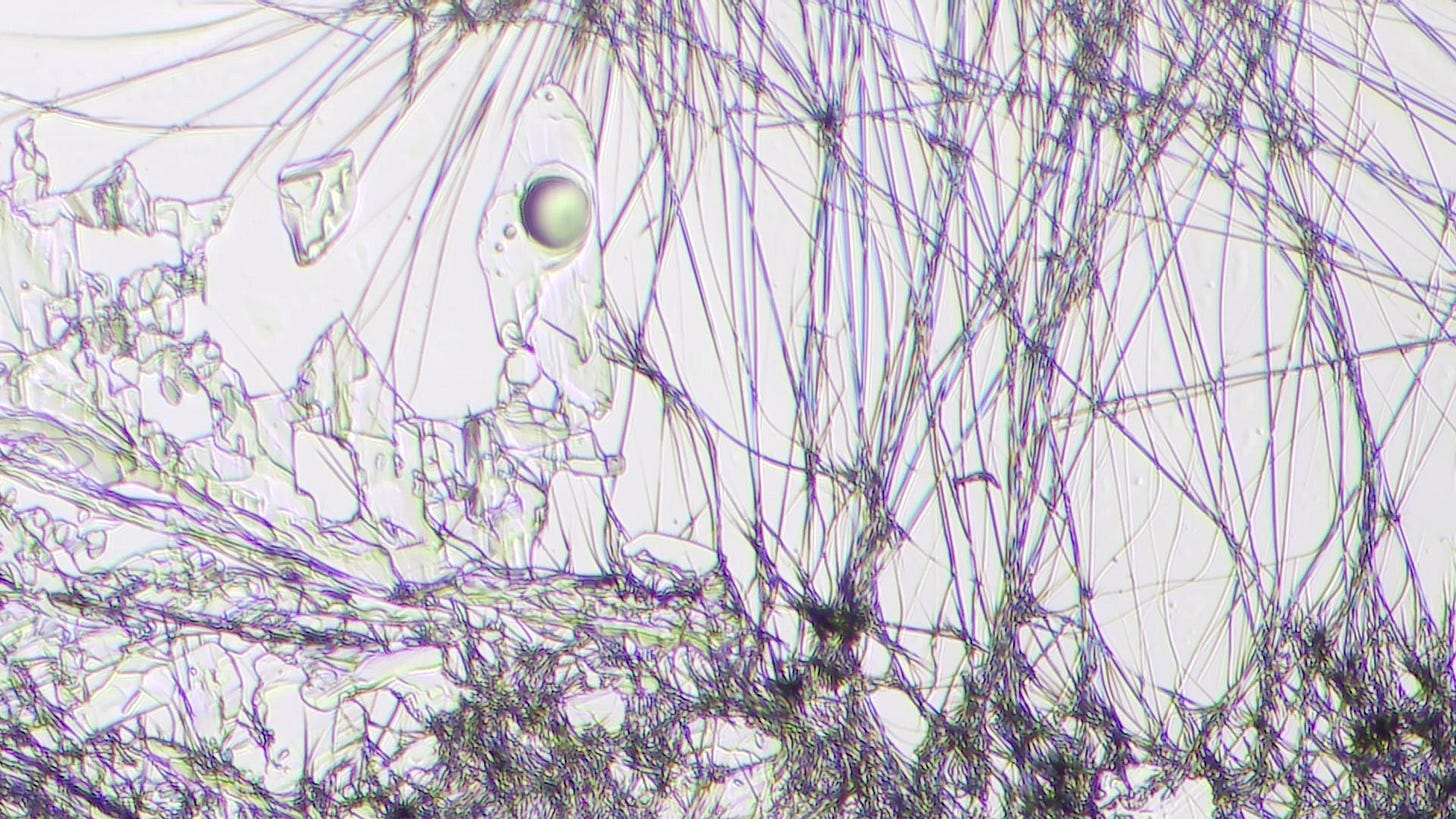Pros and Cons of EDTA: Detoxification Series #3
What is EDTA? What does it do? What are the risks and benefits? Why is there controversy over it's use?
Picture #1 - Sample of a Liquid Form of EDTA for Oral Consumption made in Ecuador (Brightfield). This picture was taken after the sample had dried.
Alternative health practitioners have been using EDTA to address heavy metal toxicity for decades. It chelates (binds) certain metals and minerals in the body, so they can be eliminated more easily. In the post-2020 world, EDTA is seen by some as an essential tool in the fight against transhumanism. This article will explore how EDTA is used; it’s many benefits; and some important things to be aware of to minimize risks.
I will dig into the controversial nature of claims that EDTA can eliminate, and/or inhibit the functioning of, nanotechnology-related structures in the blood. I’ll discuss the viewpoints of it’s proponents, and those of people who see it as a poison. The gap between these viewpoints is wide. Determining who to trust on the issue is complicated by the fact some of proponents of EDTA are in the business of selling products or services that involve its use; and some of it’s opponents are marketing alternatives. In spite of this, I'll do my best to deliver the facts, as seen by both sides, in the fairest way possible. Please keep in mind that I’m not a doctor and can’t provide official medical advice. (Sometimes, that makes me mad.)
My research has convinced me that EDTA can help us rid our bodies of some of the toxic substances we are being exposed to via aerial spraying for geoengineering (chemtrails); vaccines; toxins released worldwide due to nuclear accidents; the use of weapons of mass destruction; and by other means. Having said that, EDTA doesn’t strike me as entirely safe. It appears to have uses that are counterproductive to ridding the body of graphene and, potentially, many other substances used to facilitate the transhumanist agenda.
I’ll address what alternative health practitioners who use EDTA say about it first, and then discuss side effects and risks identified by mainstream sources. After that, I’ll dig into more controversial issues. My intention is to provide you with enough information on EDTA to help you decide where you stand on EDTA, for yourself.
WHAT EDTA IS AND HOW IT’S BEEN USED
There are many different kinds of EDTA. Each form is composed of substances that give it unique properties, and make it ideal for certain uses. For example, Tetrasodium EDTA is primarily used in cleaning agents, whereas Calcium disodium EDTA is approved for certain uses in the food industry and healthcare in the U.S. In the U.S. food industry, it’s primarily used as a preservative and stabilizer. Disodium EDTA is also approved for use in foods with certain limitations. Other countries have their own regulations pertaining to the use of EDTA.
The synthesis of the three forms of EDTA discussed above, begin with the use of cyanide, formaldehyde and ethylenediamine. If that alarms you, you’re not alone! For the sake of argument, it’s important to keep in mind that many chemical changes can occur when substances are combined. Some of these changes can dramatically change the way substances affect the body. I am uncertain about how these changes may, or may not, apply to the ingredients used to synthesize EDTA. So, for the record, the use of cyanide and formaldehyde scares me too! (It also worries EDTA opponents.)
But let’s gaslight ourselves a bit for the moment, and pretend we have no reason to be concerned - just in case we’re missing something. I’m not a chemist. If you’re not one either, we could be missing something; something that makes EDTA okay, possibly even beneficial. Let’s hope that’s the case. There’s certainly a lot of information out there that points to EDTA’s good qualities.
It was studied during World War II to see if it would help detoxify people, who had been exposed to poison gas. As it turned out, it was found to be helpful in detoxifying lead and other heavy metals from the body. (Chaitow, Leon ND DO MRO, “The History of EDTA,” healthy.net, 2025) Currently, EDTA is being used in a number of different industries, including: cosmetics, farming, water treatment and - wait for it - NANOTECHNOLOGY.
Keep reading with a 7-day free trial
Subscribe to NANOBOTS IN US to keep reading this post and get 7 days of free access to the full post archives.




